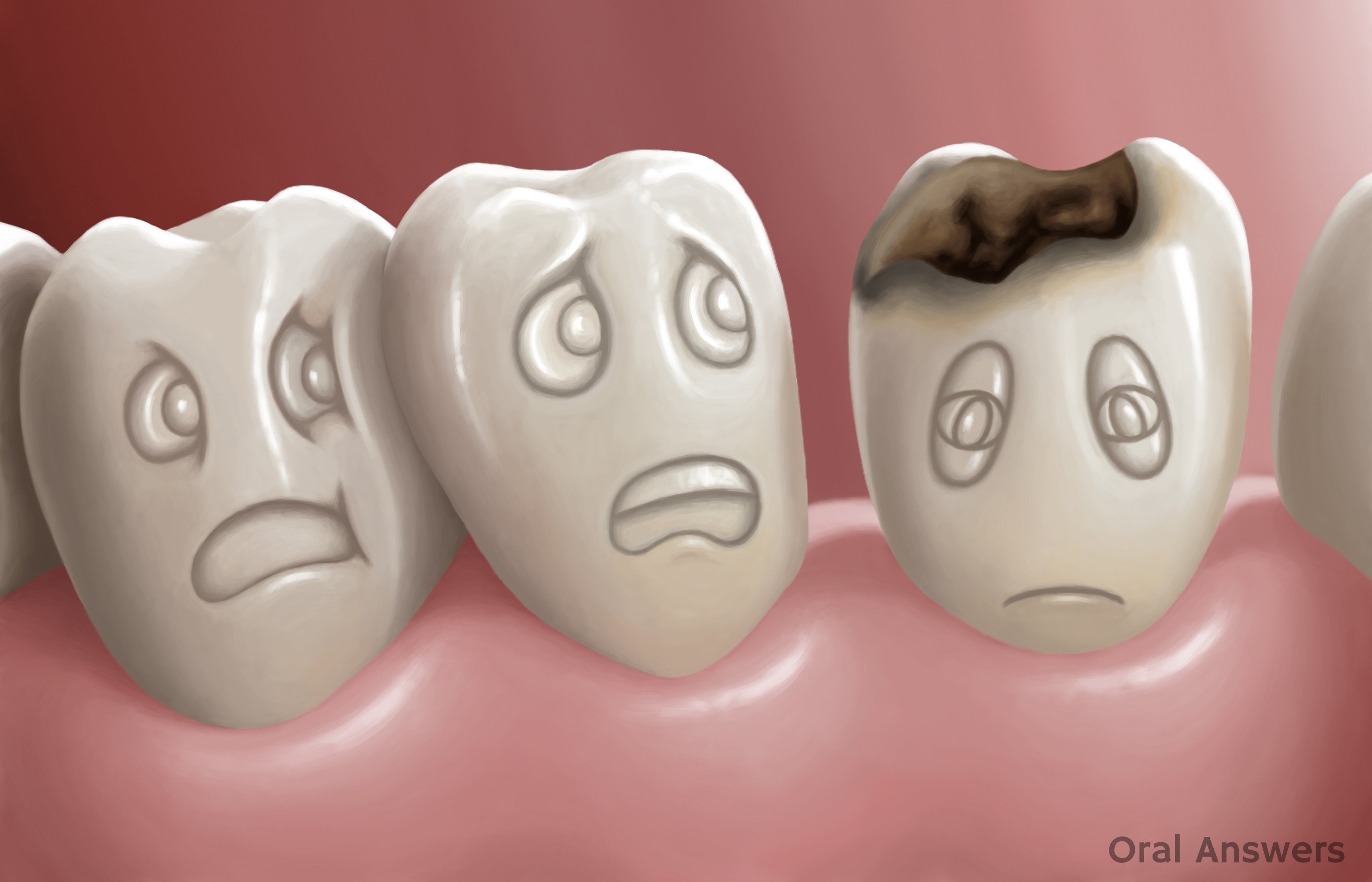We have all heard of dental decay and cavities, but what actually causes this disease of the tooth?
Dental decay (or caries) happens when the enamel and dentine of the tooth become softened by acid attack after you eat or drink anything containing sugar. Plaque is a thin sticky film that continually forms on the teeth and contains many types of bacteria.
The bacteria break down sugars, releasing acid which dissolves first the enamel and eventually the softer dentine. Enamel is the very hard outer protective layer of the tooth; it contains no blood vessels or nerves and is not sensitive to pain. Dentine lies under the enamel making up most of the tooth structure and covering the soft pulp (nerve); it does contain nerve endings and can be very sensitive to pain.
Every time you eat or drink anything containing sugars, the sugar reacts with bacteria in plaque and starts to softens and dissolve enamel. The attack can last for up to an hour after eating until the natural protection in saliva neutralises the acid and allow some hardening (remineralisation) of the softened enamel.
To prevent decay we should limit the number of sugary foods we have, in particular avoiding sugary snacks and drinks between meals as the number of “attacks” is more of a problem than the amount consumed in one go. Rinsing your mouth or chewing sugar-free chewing gum after a meal is beneficial; however avoid brushing your teeth immediately after eating as you will be wearing away the softened enamel.
Brushing your teeth thoroughly at least twice a day to reduce plaque is important; as are regular visits to your dentist so that any early decay can be caught and treated before it reaches the pulp.
To make an appointment Tel: 966 796 603
Dr. Paul Saliba LDS.RCS (Eng)
Calle Madrid 103 – Urb La Marina
Just off N-332 between Santa Pola & Torrevieja



